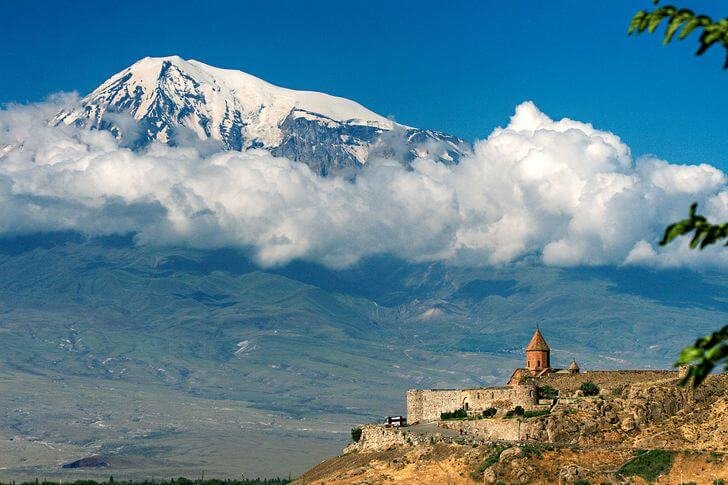More than a third of the population of Armenia lives in Yerevan. The city is the cultural, economic and political center of the country. If we consider 782 BC (when the Erebuni fortress was founded) as the date of foundation of Yerevan, then it turns out that the Armenian capital is older than Rome. There are no magnificent palaces and monumental baroque facades, but there is a unique charm of streets, parks and small squares.
Yerevan could not recover for a long time after the devastating events of the 1990s. After years of decline and lack of funding, many buildings and entire areas are in need of renovation. However, today it is clear that the city is reviving, turning into a beautiful and attractive place for tourists, where there are many worthy sights.
What to see and where to go in Yerevan?
The most interesting and beautiful places for walking. Photos and a short description.
- Complex Cascade
- Sculpture Smoking Woman
- Matenadaran
- Tsitsernakaberd
- Armenian Genocide Museum
- Erebuni Fortress
- Republic Square
- Armenian government building
- Charles Aznavour Square
- Northern avenue
- Historical Museum and Art Gallery of Armenia
- Armenian Opera and Ballet Theater
- Sergei Parajanov Museum
- Dalan Art Gallery
- Megerian Carpet
- Yerevan brandy factory ArArAt
- Yerevan Railway Station
- Blue Mosque
- Cathedral of St. Gregory the Illuminator
- Saint Zoravor Church
- Monument Mother Armenia
- Flea market Vernissage
- Yerevan Zoo
- Lovers park
- Khor Virap
Complex "Cascade"
Architectural composition designed by A.O. Tomanyan. It consists of several elements: a museum (Cafesjian Center for the Arts), a staircase, a fountain and viewing platforms that offer a panoramic view of Yerevan. The museum collection is made up of an extensive collection of glassware, once owned by millionaire Levon Cafesjian, as well as interesting works of contemporary art.
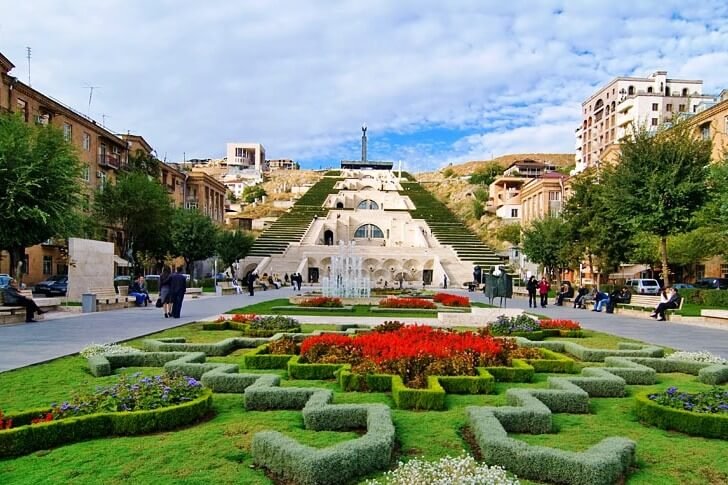
Sculpture "Smoking Woman"
The original work of the modern sculptor F. Botero is located in the square opposite the Cascade complex. She is a figure of a magnificent naked woman reclining on a pedestal with a cigarette in her hands. The installation of the sculpture caused a controversial reaction in society. Some citizens argued that this was a challenge to traditional moral principles, while others, on the contrary, considered it very original.
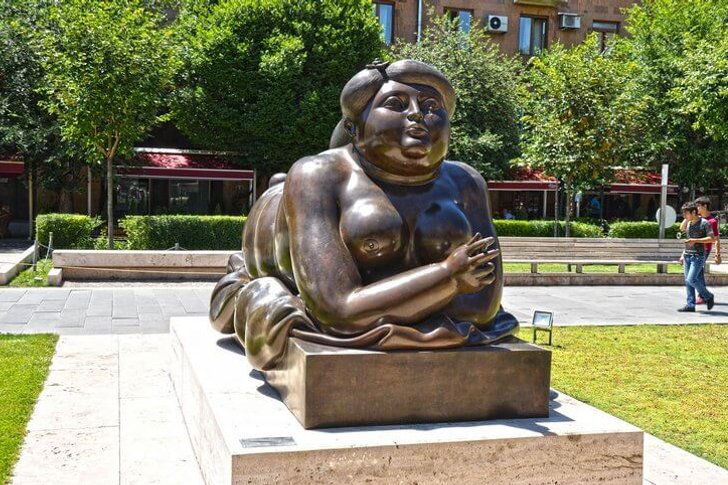
Matenadaran
Research center and museum, where ancient Armenian manuscripts of great historical value are kept. In translation from Armenian, "matenadaran" means "repository of manuscripts." To date, the collection contains several thousand manuscripts. It is believed that it has existed since the 5th century and was founded by the creator of the Armenian alphabet - M. Mashtots.

Tsitsernakaberd
Memorial complex dedicated to the numerous victims of the genocide of the Armenian nation in 1915. The memorial was built on the hill of the same name in the 1960s on the initiative of the local authorities. It consists of a 44-meter stele split in two, a cone of stone slabs, inside of which an eternal flame burns, and a 100-meter Wall of Mourning. In 1995 the complex acquired an underground museum.

Armenian Genocide Museum
The opening of the exposition was timed to coincide with the 80th anniversary of the genocide. According to the idea of the creators, the underground building of the museum is intended to symbolize the tomb in which more than a million lives have been "buried" since 1915. The collection is located on two floors. Its exhibits tell about the terrible tragedy of the Armenian people, who had to endure simply inhuman suffering during the persecution organized by the Ottoman Empire.
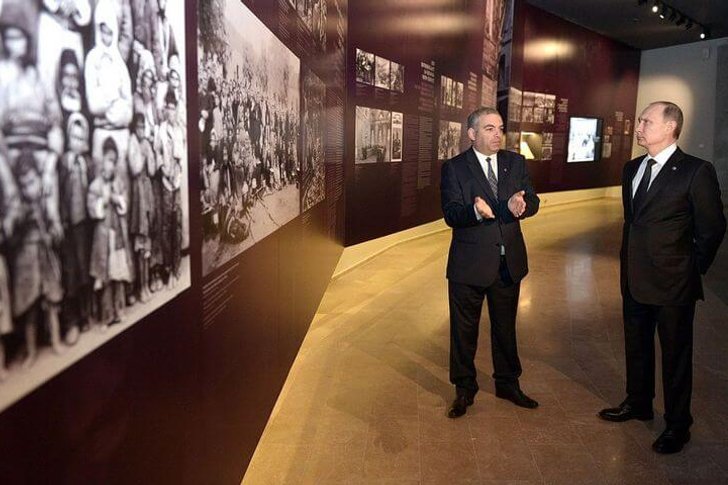
Erebuni Fortress
The ruins of an ancient city in the Ararat valley, where the state of Urartu flourished long before the advent of our era. Presumably, Erebuni was erected under King Argishti I in the 8th century BC and served as a defensive structure. The date of foundation of the fortress is often considered the year of foundation of Yerevan. In the museum located next to Erebuni, you can see a collection of valuable artifacts from the ancient kingdom of Urartu.
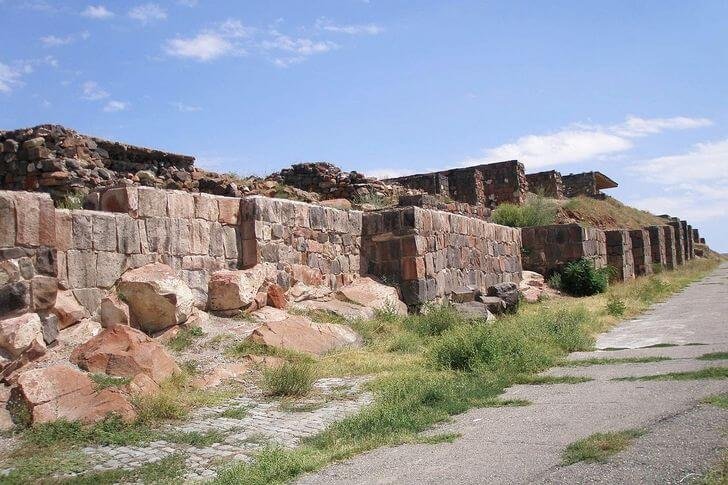
Republic Square
The central square of the Armenian capital, built according to the project of A.O. Tomanyan in the middle of the 20th century. Its architectural appearance is formed by five buildings located along the perimeter. Among them is the History Museum of Armenia with a worthy collection of paintings by famous artists. In the middle of the square there is a singing fountain with illumination. The facades of the houses are lined with pink and white tuff, the foundations are made of basalt.
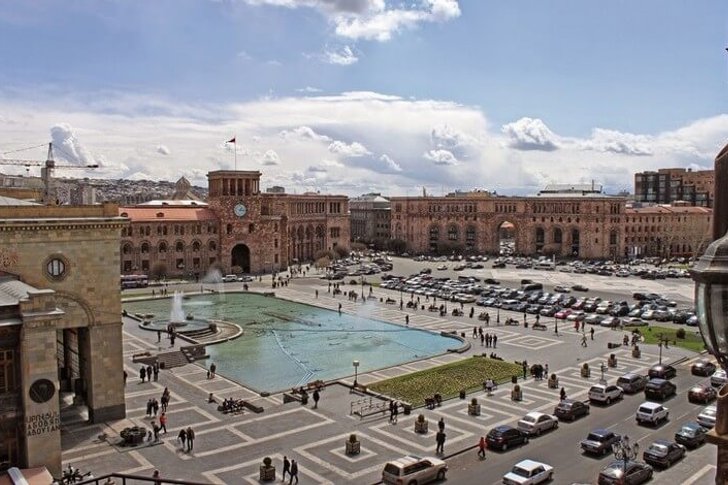
Armenian government building
A monumental building made of tuff and basalt is located on Republic Square. It was erected in 1926-52. The facade is decorated with columns and high arched spans. Above the central arch is a tower with a clock face. The architectural style of the building consists of a mixture of classics and medieval Armenian architecture. Today, some rooms are used for exhibitions.

Charles Aznavour Square
Charles Aznavour was born into a family of Armenian immigrants. To perpetuate the name of this famous chansonnier in 2001, the square near the Moscow cinema was renamed and named after the singer. He personally attended the opening ceremony of the renovated square. The building of the cinema itself, built in the 1930s in the style of constructivism, which was popular at that time, should be noted separately.
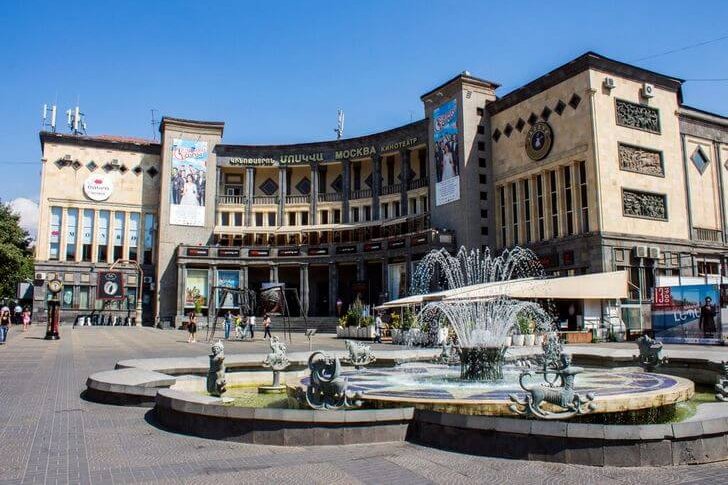
northern avenue
Pedestrian street stretching for 1.5 km from Republic Square to Opera Square. The avenue was laid on the site where private houses were previously located. The government bought the territory from the population and started construction only in 2001, although the project was conceived by A.O. Tomanyan at the beginning of the 20th century. The opening of the first part of the prospectus took place in 2006, the second and third - in 2007. Along the street are office buildings, luxury residential properties, restaurants and shops.
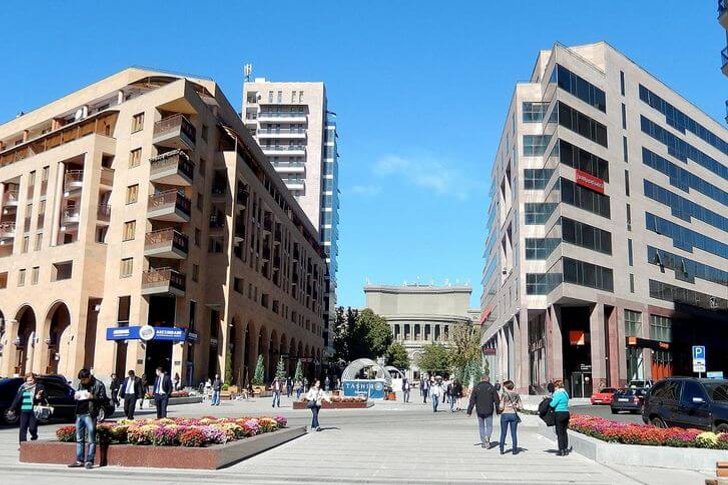
Historical Museum and Art Gallery of Armenia
The gallery and the museum are located in one of the buildings on the central Republic Square. The museum exposition consists of ethnographic, archaeological, numismatic and historical departments. The collection of paintings includes works by Armenian, Russian and Western European artists. There are paintings by Aivazovsky, Levitan, Repin, Rubens, Tintoretto, Boucher.

Armenian Opera and Ballet Theater
A full-fledged musical theater was created on the basis of the opera class of the Yerevan Conservatory in 1932. A separate building was built by 1940. The southern facade of the stage is located opposite the Freedom Square, one of the most beautiful places in Yerevan. There are monuments to the national poet of Armenia O.T. Tumanyan and composer A.A. Spendiarov.

Sergei Parajanov Museum
S. Parajanov is an avant-garde director who made Armenian cinema famous all over the world. He was born and lived in Tbilisi. In 1991, after the death of the master, a museum dedicated to his name was opened in Yerevan. The exposition consists of the director's personal belongings, as well as works of art, from which one can get an idea of the difficult life and creative path of this extraordinary person. Inside the museum, the interior of Parajanov's house in Tbilisi has been recreated.
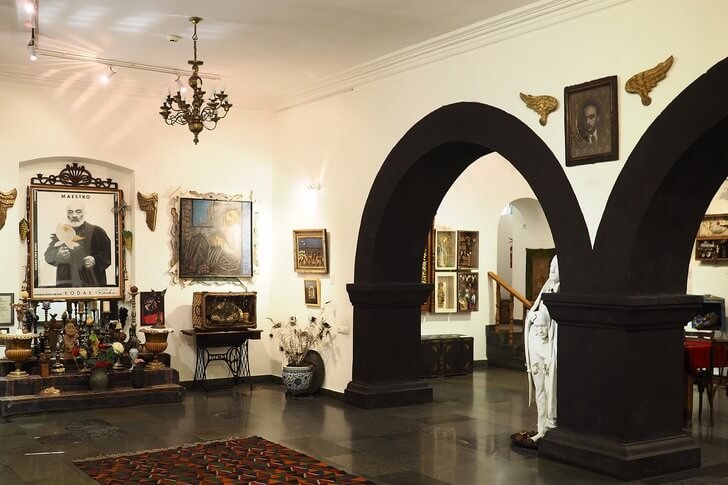
Dalan Art Gallery
The gallery presents works by contemporary artists of the post-Soviet space. Many paintings are of great cultural value. The museum offers guided tours, and it is possible to take an audio guide. There is also a souvenir shop where you can buy interesting author's things, and a cozy cafe in the courtyard, where visitors have a rest from the bustle of the city over a cup of excellent Armenian coffee.
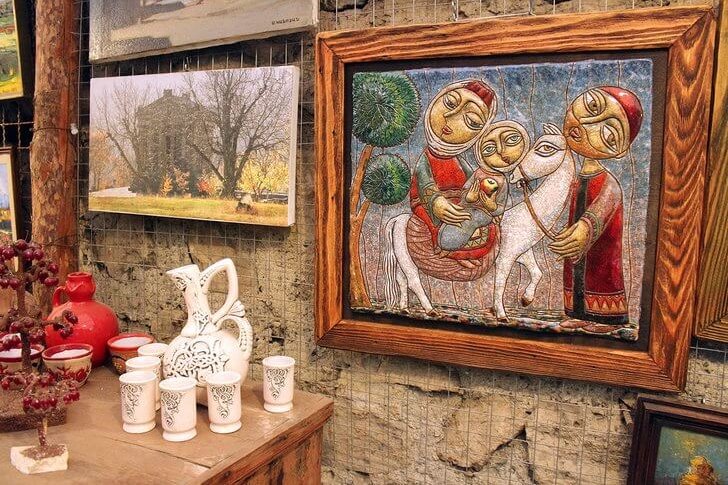
"Megerian Carpet"
Carpet factory and carpet museum of the Megerian family. Already the third generation of this family is engaged in the manufacture and restoration of carpets (the beginning of the enterprise was laid in 1917 in the USA). In 2002, the Megeryans opened a workshop in Yerevan, which eventually grew into a large factory, larger than their other productions. All products are handmade by private orders using high quality wool and natural dyes.
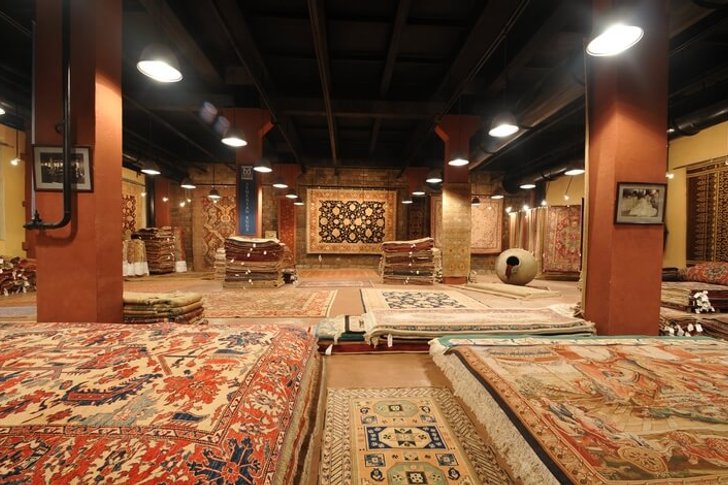
Yerevan brandy factory "ArArAt"
The legendary plant is one of the symbols of Armenia. The famous "Ararat" is produced here, and several exclusive varieties of cognac are bottled exclusively for private orders: "Kilikia", "Sparapet", "Erebuni", "Noah's Ark". The production was founded in 1887 by the merchant N. Tairyants. The plant can be visited with a tour.
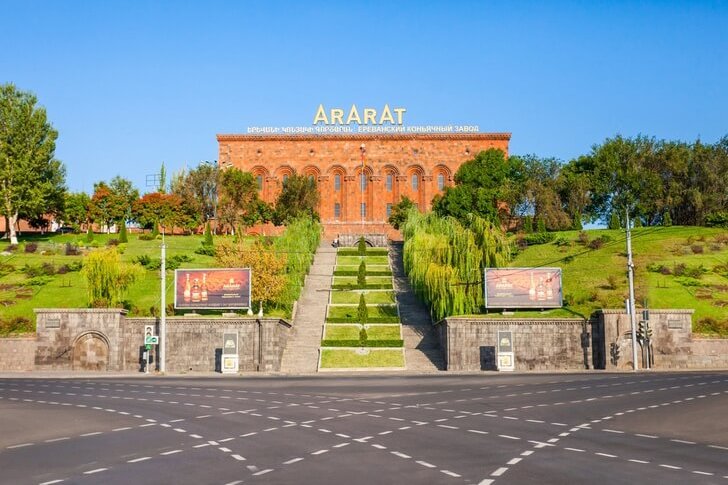
Yerevan Railway Station
The building was built in the 1950s on the very spot where the first railway line connecting Tiflis and Alexandropol passed at the beginning of the 20th century. A complete reconstruction of the complex was carried out in 2010. During the repair work, historical interiors were restored, communications were updated and modern equipment was supplied to meet the needs of the increased flow of passengers.

Blue Mosque
The temple was erected in the middle of the 18th century by order of Khan Huseynali Khan Qajar, who at that time was the ruler of the Erivan Khanate. The Blue Mosque symbolized the strength of the Armenian-Iranian friendship. To date, this is the only functioning mosque in the capital of the country, simultaneously performing the functions of the spiritual center of the Iranian community. The dome and part of the facade of the temple are lined with blue tiles.
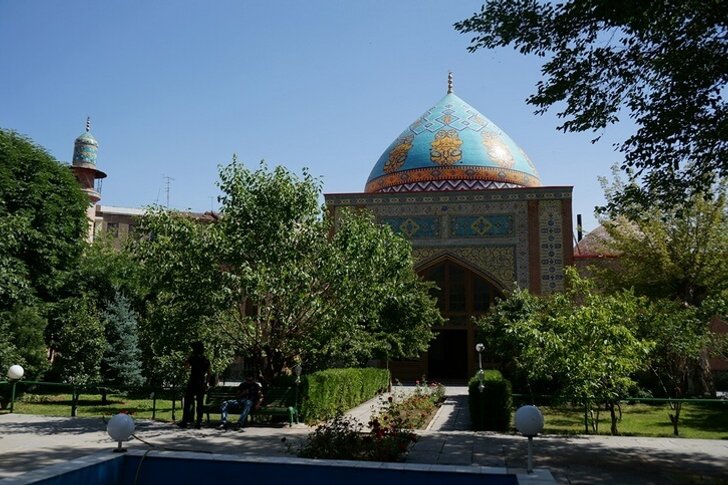
Cathedral of St. Gregory the Illuminator
The temple was built in 2001 according to the project of S. Kyurkchan with donations from the Manukyan, Gevorgyan and Nazaryan families. After Tsminda Sameba in Tbilisi, it is the largest Christian cathedral in Transcaucasia. It consists of three buildings: the Church of St. Queen Ashkhen, the Church of St. Tiridates III and the main building itself. The idea of construction belonged to Catholicos Garegin I.

Saint Zoravor Church
One of the oldest churches in Yerevan, built at the end of the 17th century. It is located in the central part of the capital. Previously, in its place there was a monastery and a chapel at the tomb of St. Ananias, which were destroyed during the earthquake. According to legend, the first temple was founded in the 7th century. The church was restored in the 1970s, after which it again became active.
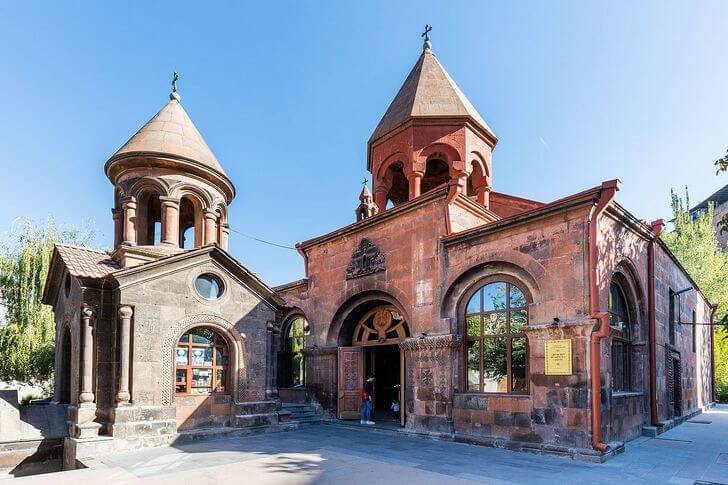
Monument "Mother Armenia"
A monument erected in 1967 in honor of the victory in the Great Patriotic War. It represents a decisive figure of a woman with a sword in her hands and a shield at her feet, personifying the Motherland. The monument is located on the territory of Haghtanak Park in the center of Yerevan. Inside the powerful pedestal is a museum dedicated to the Second World War and the events of the Karabakh wars.
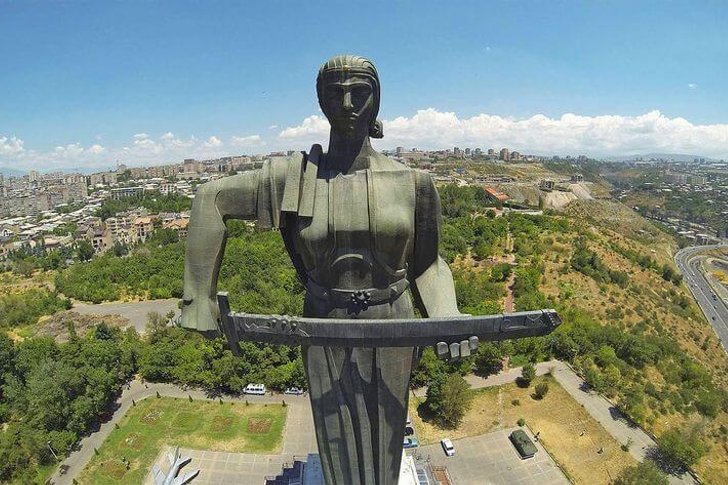
Flea market "Vernissage"
Antique market between st. Buzand and st. Arama, which sells old books, coins, paintings, handmade figurines, carpets and jewelry. Many connoisseurs of antiquities, art historians and jewelers prefer to shop here. Tourists can buy unique souvenirs at Vernissage at fairly reasonable prices or just stroll among the stalls with unusual things.
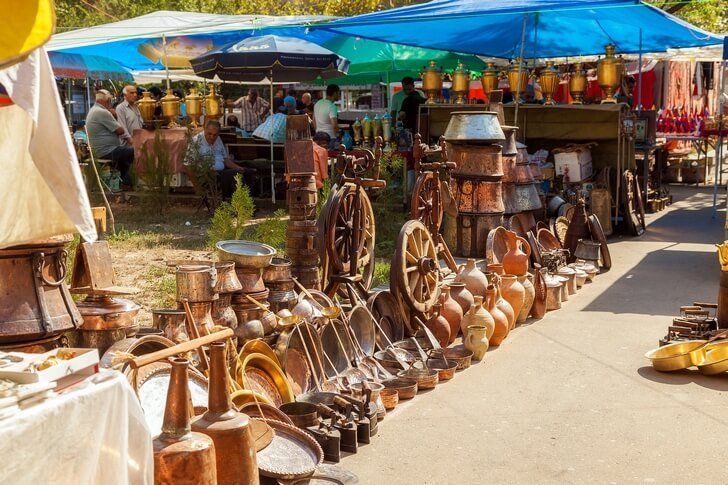
Yerevan Zoo
The zoo was founded in 1941 on the initiative of Professor A. Sarkisov. At the moment, about 300 species of animals (almost 3 thousand individuals) that arrived here from different parts of the world live on its territory. For animals, conditions close to natural have been created, up to imitation of self-procurement of food. The zoo is spread over a green area of 25 hectares in the north-eastern part of the city.

lovers park
City public park in the central part of the capital of Armenia. Its history began in the 18th century. At that time it was located in the suburbs of Yerevan and was called the garden of Kozern. In the second half of the 20th century, the place became popular with couples in love, so in 1995 the city authorities decided to rename the square. In 2005-2008 the park was completely reconstructed.

Khor Virap
The monastery at the foot of Mount Ararat, located near the Turkish border and about 40 km from Yerevan. According to biblical texts (or their interpretation), Noah's Ark landed on the site of the monastery after the end of the Flood. The monastery was founded in the 7th century on a hill where the ancient city of Artashat, the capital of the Armenian state under King Artashes I, was previously located.
